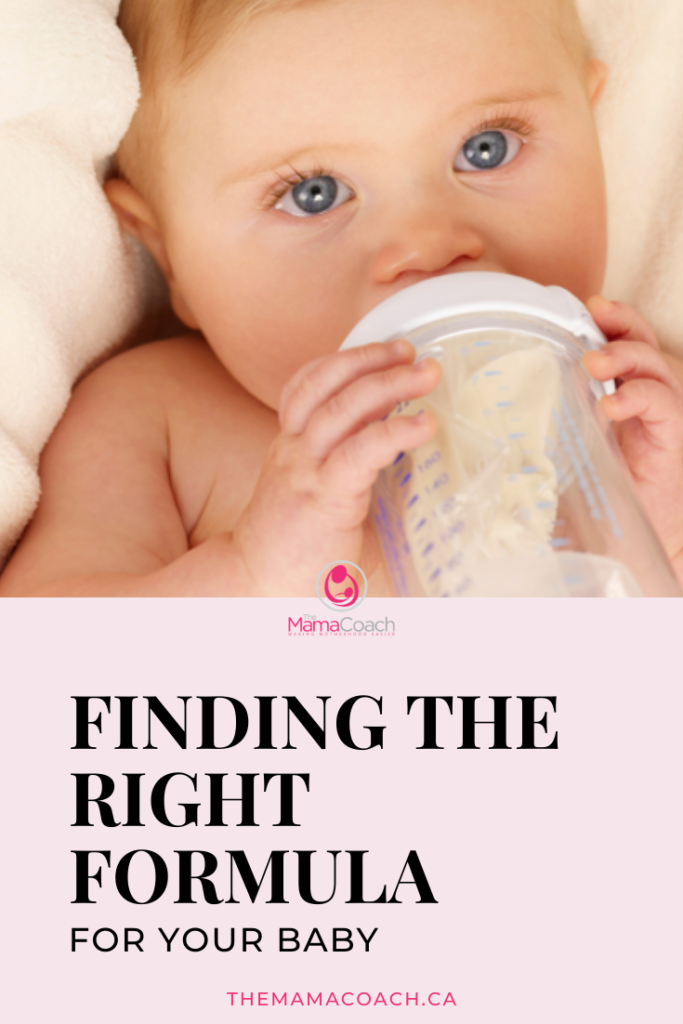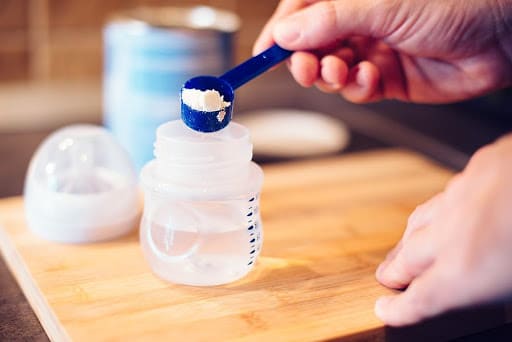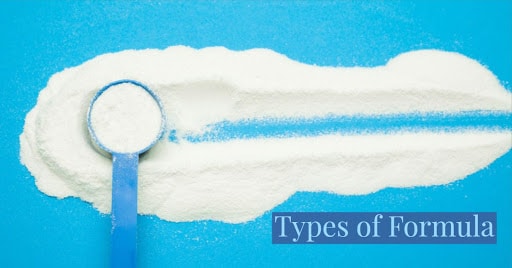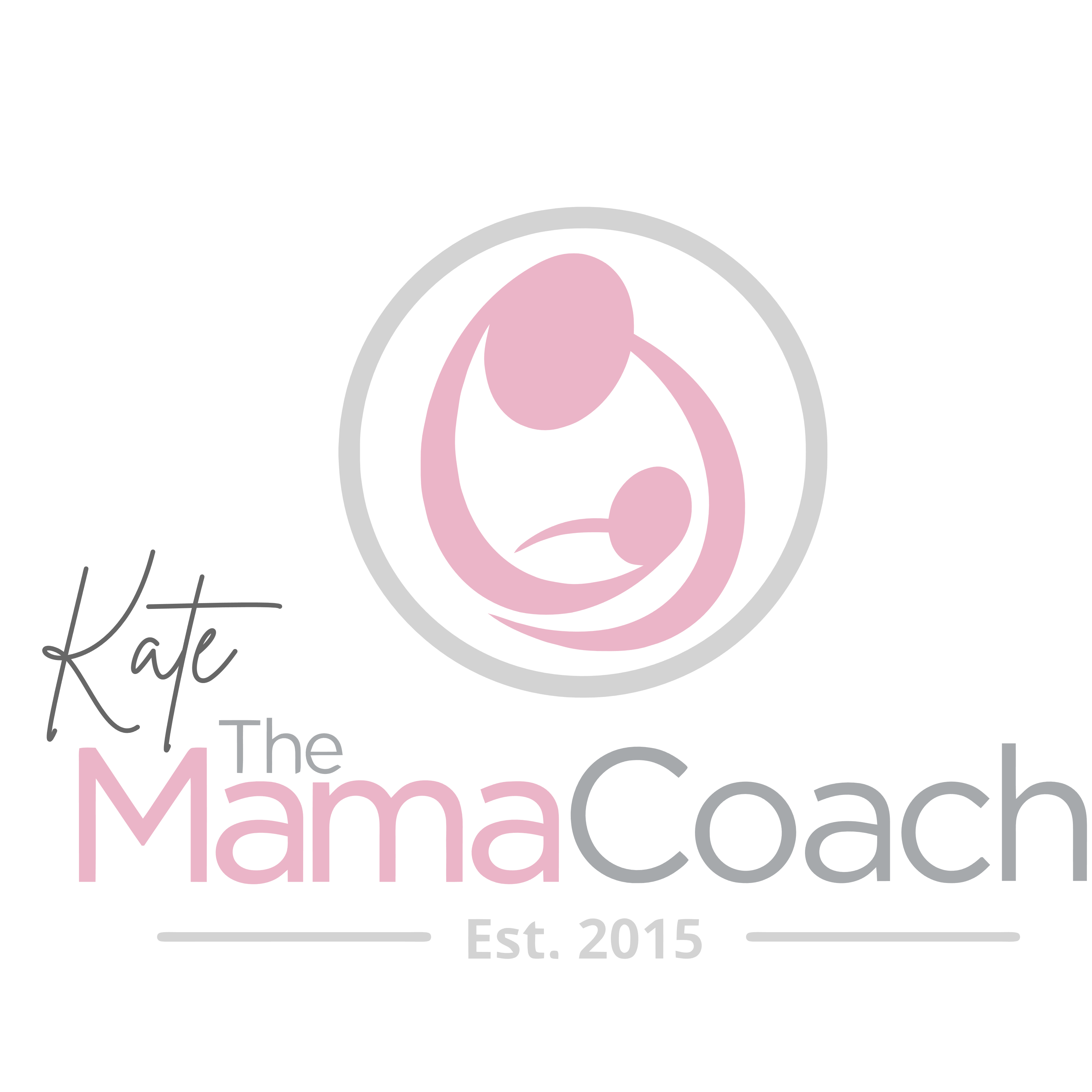
If you walk down the formula aisle in any store and your first feeling is one of being overwhelmed, you are not alone! There are SO many choices! So many brands, types and price differences between them. Where do you even start? I felt the same way when I started searching for the right fit for my babies. My hope is this article will make picking out a formula a little easier.
Different forms of Formula
-
Powdered form
-
Concentrated
-
Ready to use

Powdered Formula
- This is the most economical type of formula
- Should be used within one month of opening (write the date on the lid- mom brain is a real thing and I can guarantee that you probably won’t remember the date a month later)
- Make sure the scoop is clean and the lid is sealed tightly after each use
- It is best practice to make bottles as needed, but bottles or formula can be stored in the fridge for 24 hours.
- An alternative is to store boiled water in a sealed container for 24 hours to make bottles one at a time.
Concentrated Formula
- Open and add sterile water
- The best practice is to make one bottle at a time
- Once opened, the concentrated formula should be kept in the fridge for 48 hours
- Before opening, make sure the can’s lid is washed with hot, soapy water
Ready to Use Formula
- Pour and serve
- Good at room temperature for 2 hours, if untouched
- Can be in the fridge for 48 hours
- Most expensive
Boiling Water and Sterilization
- Water should be boiled for at least two minutes until your baby is four months old
- Bottled water is not considered sterile
- If using powdered formula, boiled water should be continued to be used regardless of the baby’s age
- Bottles and nipples should be sterilized after each use until four months of age

Types of Formula
Cow’s Milk
- This is the most common formula in which cow’s milk is the main ingredient. The overwhelming majority of formula-fed and formula-supplemented babies do best with this type of formula because it has just the right balance of protein, carbohydrate, and fat. The milk protein in the formula is significantly altered to make it easier to digest.
Example: Similac, Enfamil, Earth’s Best Organic, Kirkland
Partially hydrolyzed
- These formulas have the cow milk protein broken down into small parts (partially hydrolyzed) or even smaller parts (extensively hydrolyzed) that are easier for your baby to digest than larger protein molecules.
- It can help babes that are gassy, or constipated, sometimes babes with eczema.
Example: Gerber Good Start, Similac Sensitive, Enfamil
Extensively hydrolyzed
- These formulas are considered hypoallergenic and are used for babies who have a protein allergy and infants that cannot digest intact cow’s milk protein.
- It contains proteins that are completely broken down into their building blocks (amino acids), which allow them to be easily absorbed.
Example: Alimentum® or Nutramigen®
Soy-based
- These formulas are made with a plant protein that is modified for easy digestion. Soy-based formulas are a good option for vegan families and a good alternative for babies that are intolerant to cow’s milk protein.
Example: Nestle Good Start Soy, Enfamil Isomil or Similac Isomil
Amino acid-based
- These formulas are for infants who are unable to tolerate extensively-hydrolyzed formulas.
Example: Neocate or EleCare
Low Lactose or Lactose-Free
- These formulas have significantly less lactose or are completely lactose-free. This is a good option for babies that are sensitive to lactose.
Example: Enfamil Gentlease, Enfamil lactose free, Similac Sensitive

Formula Composition- How do formulas differ?
- There are five main components to the formula: Carbohydrate, protein, fat, vitamins, and minerals, plus other nutrients.
- What makes one brand of formula different from the next are the specific carbohydrates and proteins as well as any additional ingredients.
- Casein and whey are two kinds of cow’s milk proteins found in various proportions in different brands of cow’s milk-based formula.
Carbohydrates
- Lactose is the main carbohydrate in both breast milk and formulas made from cow’s milk.
- Corn maltodextrin is sometimes used as a secondary source of carbohydrate in the formula.
- Lactose-free, soy, and special formulas contain one or more of the following carbohydrates: Sucrose, corn maltodextrin, modified cornstarch, or corn syrup solids.
Protein
- Breast milk contains about 60 percent whey and 40 percent casein. Most formulas have similar protein content. Others contain 100 percent whey.
Fat
- Breast milk contains a blend of monounsaturated, polyunsaturated, and saturated fat.
- Formulas use a variety of oils to match the fat makeup of breast milk. They include soy oil, coconut oil, palm or palm olein oil, and high oleic sunflower oil.
- The FDA has approved the addition of two long-chain fatty acids to the formula: DHA (docosahexaenoic acid) and ARA (arachidonic acid), which are now standard ingredients in the formula. Both of these substances are important for brain and vision development.
Vitamins and Minerals
- Most formula labels state that vitamins and minerals are included. Some of the names can be confusing for example, ferrous sulfate is iron, Sodium ascorbate is vitamin C, and calcium pantothenate is vitamin B5.
- Nucleotides: These are the building blocks of DNA and RNA, naturally present in breast milk. They have several functions and may aid in immune system development. Different brands of formula have different amounts of nucleotides added.
When to switch formulas
Most babies start with a cow’s milk formula and then you would see how your baby tolerates it. Give it a few weeks before you switch the formula again. Many parents wonder when to switch to a different formula. If your baby is having symptoms such as excessive gas, bloating, diarrhea, constipation, rash, bloody stool, and/ or spitting up more frequently reach out to your family doctor and discuss the need for possibly switching formulas.
Picking a formula for your baby can be overwhelming. There are so many brands to pick from and types to choose from. It comes down to your baby and how they are tolerating it. The most important thing to remember is a fed baby is best and all these brands today provide your baby with the nutrients that they need to grow and develop. If you have any questions please reach out to a Mama Coach or speak to your doctor.
